An epos as a collection of legends and myths of an entire people does not have a specific author and is being formed for quite some time. The Nart epos is not only the oldest monument of folklore, but also helps historians to study the life of the Abkhaz people for many thousands of years before our days.
Asta Ardzinba
The word "epos" comes from ancient times: it has an ancient Greek origin. It is one of the three main types of literary narrative along with drama and lyrics. Interestingly, the epos, more often does not have an author, but develops over a long time as the work of an entire people. Thus, along with the legends and myths about heroes, it contains in itself a reflection of the national life of the past, often of a very ancient past.
Like the Indian "Ramayana", the Sumerian "Gilgamesh", or the Armenian "David Sasunsky", and the Caucasian epos the "Tales of Narts" are the oldest monument to world folklore. The heroic epos of the peoples of the Caucasus has reached us in living existence and still amazes with the power of the artistic word.
Word of mouth. How did the Nart epos form
Many peoples of the Caucasus have myths about the mighty heroic warriors who fight against giants and possess remarkable strength. First of all, Abkhaz-Adyg peoples - Abkhaz, Abaza, Ubykhs, Adygs, Kabardians, Circassians - and Ossetians: here the Nart epos, according to scientists, has the deepest roots. Legends about Narts are also presented in the oral folklore of Karachai and Balkarians, they are mentioned in Vainakh folklore among Chechens and Ingushs.
Despite the fact that many stories are similar, and the names of heroes are consonant, each people have their own epic features. Probably due to the fact that folk storytellers contributed to it certain beliefs and ideas about the surrounding world that are characteristic of their own people.
The internationality of the epos, that is, its affiliation to different peoples of the Caucasus in terms of language and ethnic origin, is an amazing fact, a mystery that folklorists have been trying to solve for many decades, but they never came to a common denominator. Some suggest that the creators of the epos were the peoples of the so-called Caucasian language family, and the fact that Ossetians have narrated about Narts confirms their local, not new, Scythian-Sarmatian origin. Others believe that the West Caucasian sagas retain the ancient Iranian core, and the word "Nart" has an Iranian origin from the Indo-European root, meaning "man, hero". At the same time, scholars agree that the epos of the Abkhaz-Adyg peoples retained archaic features and fragments of early traditions and beliefs, while Ossetian legends were reworked to form a smoother narration.
The Nart epos originated in the mountains of the Caucasus for thousands of years. Most researchers believe that it began to form in the VIII-VII centuries BC. Some scientists argue that the origins of the Nart legends date back to the III millennium BC. Whatever the dating, one can speak with confidence: they were born long before the appearance of Christianity and Islam in the Caucasus. Evidence of this is polytheism inherent in the tales of the warrior brothers.
Separate stories about Narts were combined into cycles that were interconnected, had a common plot and a certain chronology. Over time, a huge number of disparate myths about Narts formed an epos. The process of the formation of the nartiad largely ended in the Middle Ages, by the XII - XIII centuries. By this time, Christianity and Islam had already appeared in the Caucasus, which left an imprint on later legends about Narts. If in the ancient narratives the pagan worldview prevails, then in the later ones there are already symbols and attributes of monotheistic creeds.
In addition, narrators, in order to make stories of Narts more interesting, often modernized them. For example, in one of the legends of the Ossetian epos, Nart Batraz charges up a cannon and shoots it into the enemy’s fortress, despite the fact that firearms appeared in the Caucasus at the turn of the 16th — 17th centuries.
Thus, the Nart epos acts not only as a monument of oral folk art, but also as a historical source. This or that reflected different periods of the socio-economic and cultural development of the people that created them: from the era of matriarchy to the establishment of feudal-class relations. That is why the nartiad is called an authentic autograph, received from the hands of the people themselves.
Among the Abkhaz, the Nart epos has a mixed, verse-prosaic form, with the prosaic narration predominating.
The well-known Abkhaz scholar Shalva Inal-ipa wrote: "Some of his fragments (epos - ed.) are performed in songs and played on the folk two-stringed bowed musical instrument "apyarts". But only in a few parts did the epos come in the form of a song narration, inseparable from vocals and music (there is a special Nart melody), and sometimes (for example, in the Song of the Mother of Narts) followed by dances."
There are many versions of the origin of the word "Nart". Some scholars derive this name from the Hurrian region of Nakhriy. Others speak of the Abkhaz origin of the term. Some researchers insist on Mongolian roots, associating the word there are many "Nart" with the Mongolian "nara" ("sun"), to which was later added the Ossetian suffix "t" - an indicator of the plural of nouns (surnames are still formed in the Ossetian language with the help of this morpheme). However, according to most scholars, the most convincing is the version of the Iranian origin of the term. As noted above, they see a similarity between the word "Nart" and the Iranian "nar".
Equality and democracy. Narts - who are they?
According to the legend of the Abkhaz, the Nart society is a clan which includes one hundred brothers and their only sister Gunda, all of whom were born by one mother named Sataney-Guascha. This big family symbolizes the whole nation.
Narts - tall, noble and mighty warriors. With one blow of the sword, they can split the rock and overcome the cliff in one jump, they accurately shoot a bow and masterly swing the sword. On the one hand, they are noble, courageous, fearless, on the other hand, they are subject to earthly passions: envy, jealousy or anger are not alien to them. At the same time, they are inextricably linked by their "brotherhood".
A lot of time the brothers spend on campaigns, fighting with man-eating giants, witches, dragons and foreign invaders. They beat off treasures, impregnable fortresses, protect the disadvantaged ... The whole life of the Narts is permeated with heroism of battles. It is campaigns, in particular those "for gaining fame while" (in the Abkhaz "хьыӡрацара" ed.) that form the main plot lines of the nartiad.
The protagonist of the Abkhaz epos is the Nart Sasrykva, born of stone. The tales of the adventures of Sasrykva are the central core of the epic. It is Sasrykva, who is almost idealized, who rescues his brothers from cold death in darkness. He shoots down a star, which illuminates the way for the Narts, and steals fire from the evil giants for the brothers. He performs feats, protects the disadvantaged and weak, restores justice. Alone, Sasrykva rescues his brothers from the womb of an evil ogre, kills a dragon.
Sasrykva was illegitimate, and therefore the elder brothers considered him to be more uneven than themselves and not a real Nart. In addition, the brothers envied their superior strength of Sasrykva, although he repeatedly rescued them from the trouble. Ultimately, the epos says, the hardened brothers dug out the vulnerable place of Sasrykva from the witch and killed their younger brother.
"When the boy was tempered like a Damascus blade,
Ticks for his right leg kept him on fire.
His weak point is there, and his soul hides there," is sung in legends.
Another important figure of the nartiad is Sataney-Guascha, the wisest and ageless mother of all Narts. This is one of the brightest female images of world poetry. She is clever, cunning, economic. Narts always seek advice from Sataney, and her advice always turns out to be true. Many Narts escaped death thanks to their mother.
Shalva Inal-ipa called the image of Sataney-Guascha the mind and conscience of the people.
"Sataney is the embodiment of the traits of an ideal woman who warms without a sun, shines without a moon. Sataney is the ancestor and head of the family, the organizer of the family hearth, the main housekeeper, the wise diviner and sorceress, and finally the teacher of the people," the scientist wrote about her.
The well-known epos researcher Vasily Abaev, in turn, noted: "You can think of Narts without any of the heroes, even the most important ones, but you cannot think of them without Satanei".
Sataney enjoys infinite respect among the Narts and occupies almost the highest status in their society.
"The sons did not contradict her. There is only one mother and there are a hundred of Narts! If they had raised their voices against the mother, what could she do with them?" say the legends.
Other female characters play an active role in legends less frequently. Often, girls become the object of controversy, growing into enmity between the Narts.
In addition to the brothers, heroes of some legends act as alien heroes. An interesting episode is about the hero Narjhow, who has kidnapped Gunda - the sister of Marts.
This is how the only sister of the heroes is described by the epos: "Her name was Gunda and for her extraordinary beauty she was called Beautiful. Narts ardently loved their sister, raised her with great care, took care of her. She lived in the crystal tower. Her feet never touched the ground. The brothers fed the sister only the bone marrow of the fowl. The girl's body was like fresh cheese - white and tender. The skin glowed like a mirror. Gunda could not be described by the human language.
Narjhow is not a Nart, but is not inferior in strength to the strongest of them. He has iron teeth with which he can bite through the chains, and steel whiskers. He kidnapped the beautiful Gunda, who by that time had already been married to Huazharpys. In punishment for the broken happiness of her daughter, Sataney-Guascha turned Narjhow into a stone block, and Huazharpys unfairly injured turned into a beautiful rhododendron, pleasing people with its beauty.
The world as a matter of course. What do Narts love the most?
It is interesting that the origin of the world and humanity is not explained in any way in the Nart legends, while the legends of other nations reveal their ideas about how life began on earth. Narts, on the other hand, perceive the real existence of the world as something taken for granted, and their worldview is based on this.
In the pantheon of Narts there are patrons, for example, thunderstorm phenomena — Afy, forests and fowl — Ayrgy-Azhveipshaa, etc. However, they cannot be called gods in the usual polytheistic understanding, absolutely authoritative or all-powerful. Narts know neither sacred places, nor sacrifices. At the same time, they believe in an indefinite supernatural principle - adoha, which, according to legends, is also imbued with the mother of the Narts Sataney-Guascha.
The main theme of the Nart epos is patriotism, fearlessness and courage of the heroes in defending their homeland. At the same time, ordinary workers, such as blacksmiths, plowmen, and shepherds, enjoy the same honor as warriors in the country of Narts. They are praised in the same way as the protectors. Respect for the woman, care for the elders and education of the younger generation are topics that are also reflected in the epic.
The animal horse occupies a special place in the legends. For the Narts, this is a devoted friend, as omnipotent as his master. Horses in the legends about Narts will never trust a person until they experience courage and loyalty in friendship. So it was with Sasrykva at the first meeting with the speaking horse Arash, who later became his faithful friend and assistant in affairs.
The Nart epos is the key to the history of the peoples who gave birth to it, the key to understanding the culture that goes back to deep antiquity. Even the material studied is the basis for many scientific studies. But much has been irretrievably lost - including, perhaps, some of the most important parts of the Nart epos.
The study of nartiad began relatively recently, in the nineteenth century. In 1940, four Nart legends were first published. In 1988 came the "Adventures of the Nart Sasrykva and his ninety-nine brothers."
A special role in the study of nartiad in Abkhazia was played by Academician Shota Salakaya - the first Abkhaz professional folklorist-nartologist and epos scholar. Another well-known researcher of the Abkhaz Nart epos is a prominent specialist in the field of Caucasian folklore studies Zurab Dzhapua.
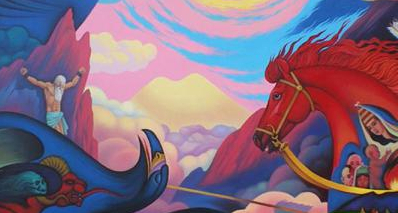
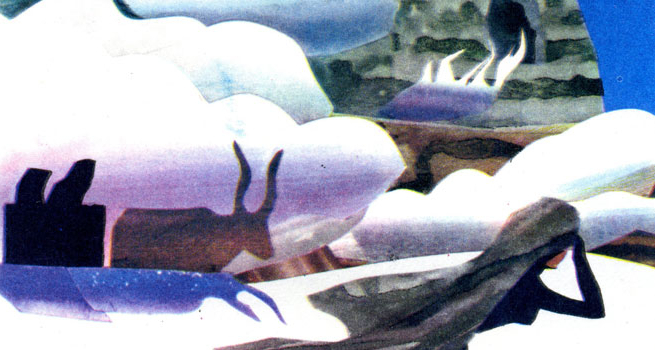
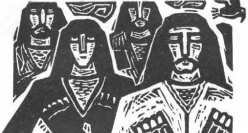
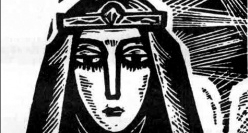
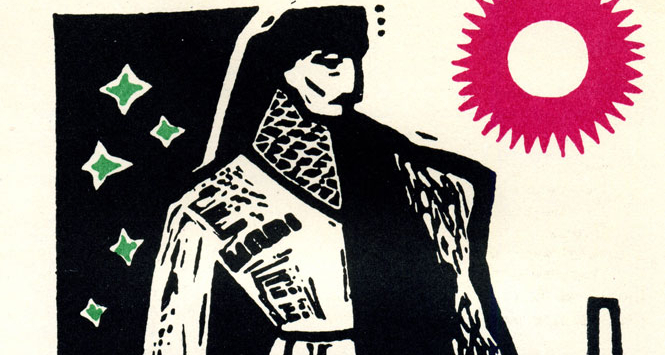
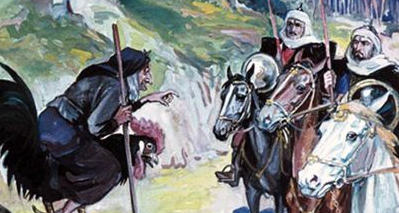
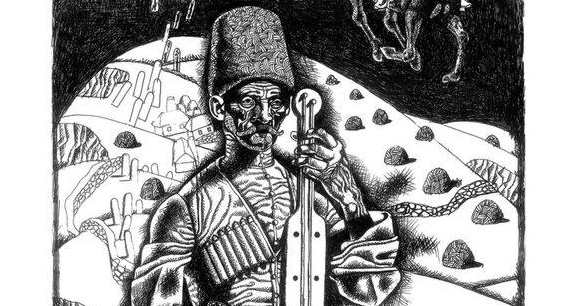
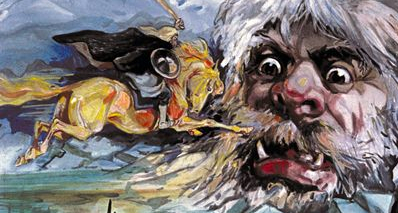
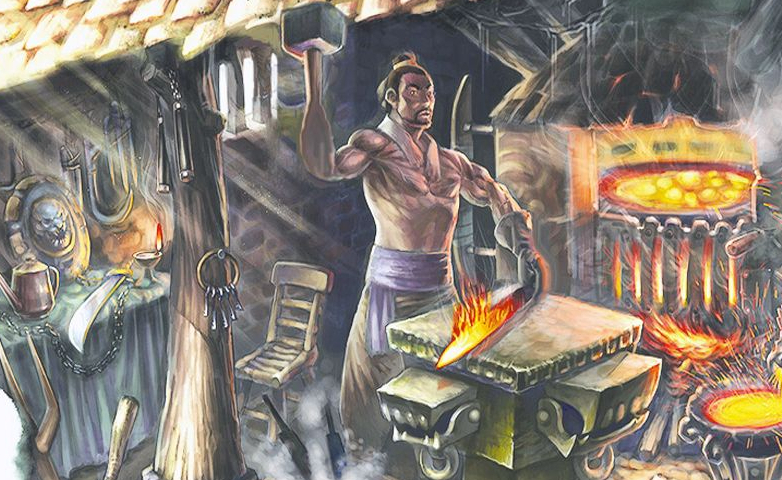
to login or register.